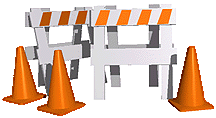 |
|
 |
 |
|
 |
This lecture deals with physical properties of soils and relates directly to Lecture 2. A significant portion of soil taxonomy deals with soil physical properties. These properties in turn have a significant impact on plant growth and productivity.
|
|
Understand the role of soil texture and structure in crop growth |
| Be able to relate texture and structure to soil aeration and water infiltration | |
| Be aware of influence of soil temperature on seedling development and crop growth and development | |
| Understand the role of tillage in ameliorating problems caused by poor structure and drainage | |
| Understand the positive and negative relationships between tillage practices and water and wind erosion |
Soil physical properties have a significant influence on crop plant growth and development. Soil texture and structure are the most important of these properties. Soil texture is most important in the areas of water holding, nutrient supply, and on ease of tillage. Soil structure has the greatest influence in the areas of soil aeration, water infiltration, and soil temperature.
The primary method of addressing many of these soil physical properties has
been the use of tillage. Tillage can change the soil structure, improve moisture
intake and storage, improve aeration and fertility. However, tillage can also
impact on soil loss from both soil water and wind erosion.
![]() Two basic physical properties of soils are
texture and structure
Two basic physical properties of soils are
texture and structure
|
|
|
Sands are called "light" soils
|
|
Soil Structure
|
|
|
|
|
| |
|
|
|
|
|
|
| Is the rate which rain or irrigation water enters the soil |
| |
| Depends on both surface soil and subsurface horizons |
| |
|
Rate is at maximum value soon after water application begins
| |
|
|
| |
| O. M. and soil texture also have influence | ||
|
Success of a cropping system may be greatly influenced by the ability to capture and hold limited rainfall |
|
|
Affect the biological processes in the soil
|
|
|
|
Soil temperature may vary appreciably with depth below the surface | |
| Surface temperatures may undergo a wide fluctuation | ||
| Dark colored soils absorb a higher proportion of the radiant energy | ||
| Angle of incidence makes difference | ||
|
Fluctuations in soil temperature are influenced by both heat capacity
and thermal conductivity of the soil
| |
|
If surface layer is wet, soil warms slower than dry soil because heat is conducted to lower layers and it takes more heat to change the temperature |
|
|
Variation in temperature much greater in bare soil compared to one
with vegetable cover
| |
|
Shading effect beneficial in avoiding excessive soil
temperatures
| |
|
Germination of seeds affected more by soil temperature than any other
factor except moisture
| |
| Roots are more susceptible to injury by high temperatures |
Soils are tilled for three general reasons
|
|
![]() Tendency is to reduce number and intensity of tillage operations
Tendency is to reduce number and intensity of tillage operations
| In 1875, it took 150 man hours of labor to produce 270 kg of corn. By 1975, it took 4 man hours. | |
|
Tillage can be done closer to optimum time
|
|
|
|
As long as the majority of our food crops are grown in the soil, a basic
understanding of soils will continue to be essential to crop production. This
section discussed two of the most important physical properties of soils, that
of texture and structure. Soils that are too sandy (course textured) leach
quickly and do not hold water well. This can influence both fertility and the
environment, as well as limit the plant's ability to obtain water for turgor,
photosynthesis, and nutrient uptake. Soil structure has a primary impact on soil
porosity and aeration. If water does not move through soils, air is excluded and
plant roots die. If water does not enter the soil (infiltration) and instead
runs off, the water is lost to the plant and erosion often occurs. A secondary
property, but none-the-less important, is soil color. This effects temperature,
how slowly or quickly a soil dries, and has a direct influence on seeding date
and germination. Finally, mankind uses tillage to effect the soil physical
properties. This can be both beneficial and harmful (water and wind erosion
potential of tilled land).
| Know the difference between soil texture and structure. | |
| Be able to explain how texture and structure influence crop plant growth. | |
| Know the relationship between pore space and plant root growth and development. | |
| How does soil temperature effect crop plant growth? | |
| What is tillage and how does it influence soil physical properties? | |
| What is tillage and how does it influence soil physical properties? |
